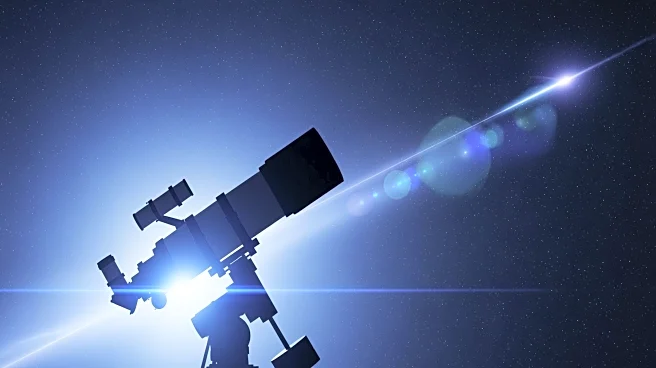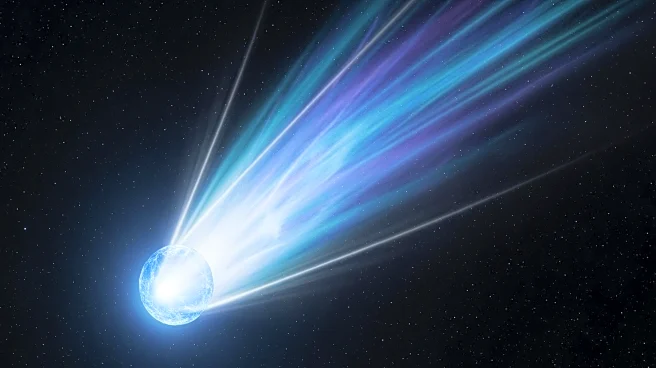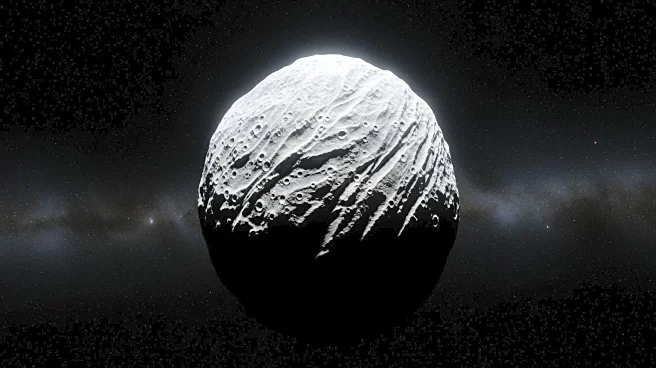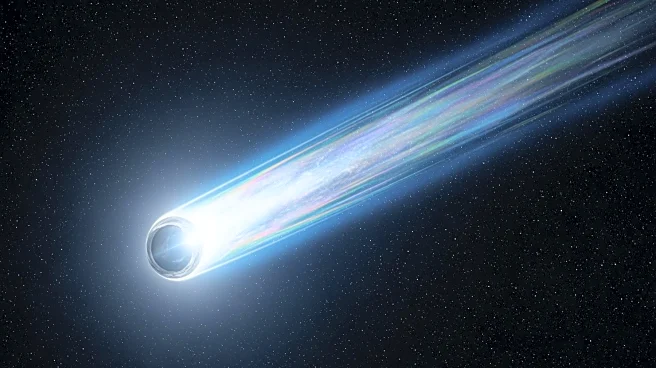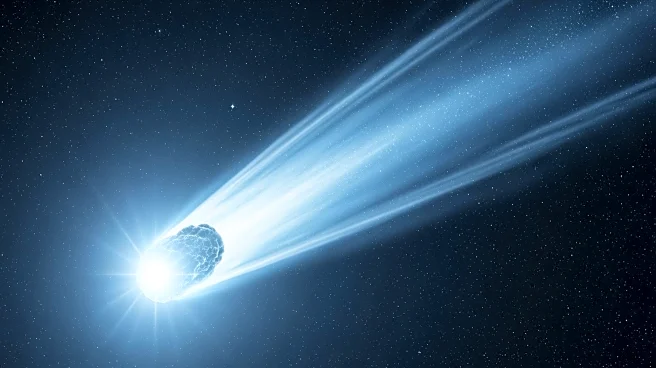What's Happening?
Avi Loeb, a prominent astrophysicist, is examining the interstellar object 3I/ATLAS, which displays a unique anti-tail alongside traditional comet tails. The object was observed on November 15, 2025, using
a telescope in Thailand. The anti-tail phenomenon is not fully understood, but theories suggest it could be due to large dust particles or ice fragments. Loeb also speculates about the possibility of technological thrusters causing the anti-tail. The object is set to make its closest approach to Earth on December 19, 2025, providing further opportunities for study.
Why It's Important?
The study of 3I/ATLAS is significant as it could provide insights into the nature of interstellar objects and their composition. Understanding whether the anti-tail is a natural or technological phenomenon could have implications for astrophysics and the search for extraterrestrial technology. The investigation challenges conventional scientific perspectives and encourages open-mindedness in scientific inquiry. Loeb's work has sparked public interest and debate, highlighting the importance of evidence-based science and the willingness to explore unconventional hypotheses.
What's Next?
As 3I/ATLAS approaches Earth, scientists anticipate gathering more data to determine the nature of its anti-tail. Spectroscopic analysis may reveal whether the tail is caused by natural outgassing or artificial jets. The findings could influence future research on interstellar objects and potentially reshape our understanding of cometary physics. The scientific community and the public are keenly awaiting the results, which could validate or challenge existing theories about interstellar phenomena.
Beyond the Headlines
The investigation into 3I/ATLAS underscores the broader cultural and scientific importance of maintaining curiosity and openness in research. It highlights the challenges faced by scientists who propose unconventional ideas and the need for respectful debate in the scientific community. Loeb's work exemplifies the courage required to pursue innovative research despite criticism, fostering a culture of intellectual pluralism and imagination.




